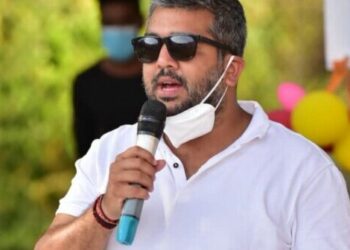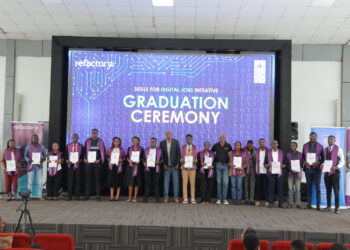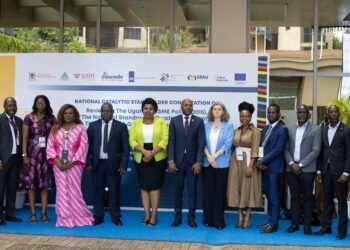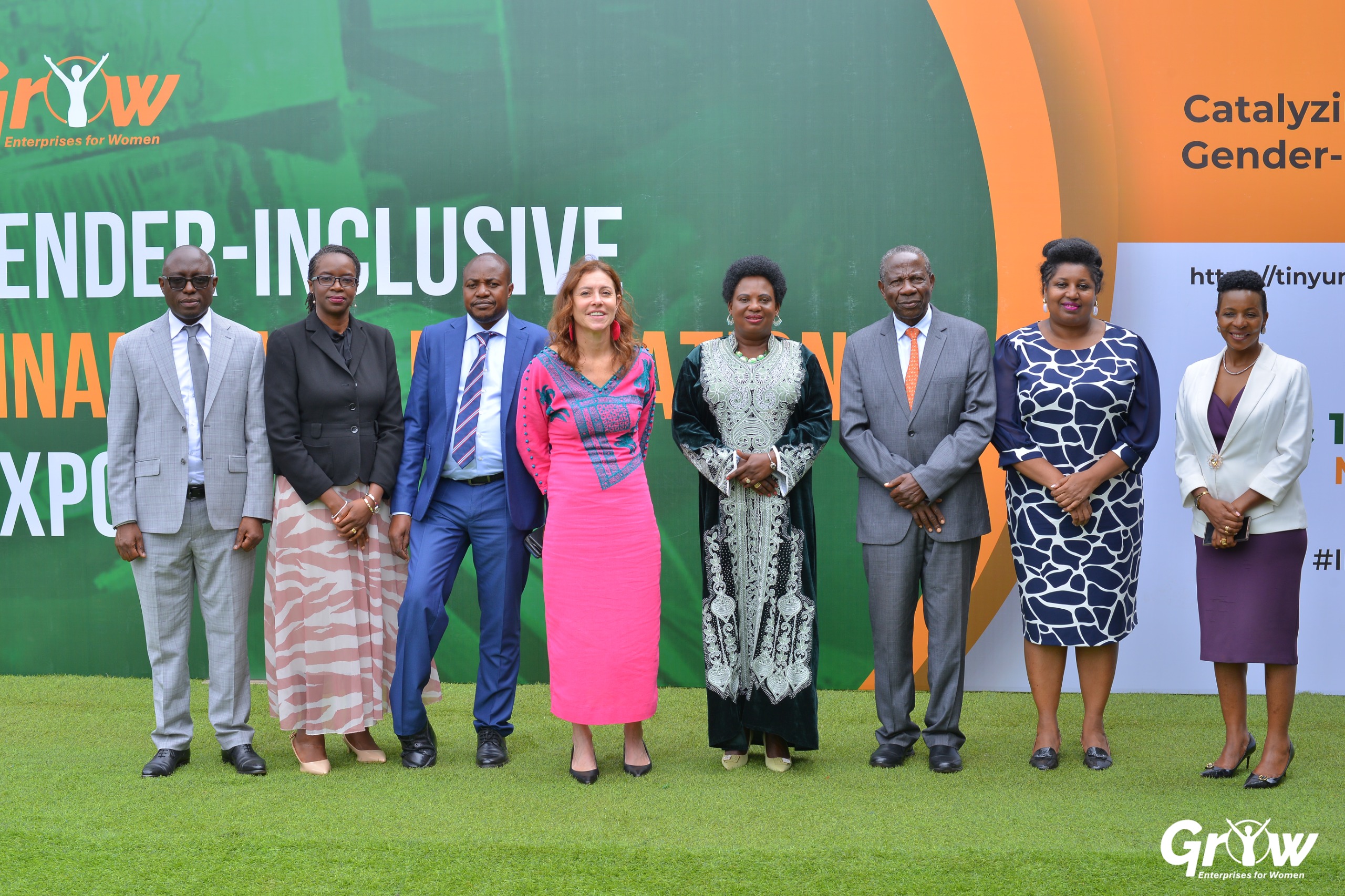By Ms Almaz Gebru
I am honoured to join you today to launch the long-awaited Uganda Green Growth Development Strategy.
The strategy is a re-affirmation of the government’s commitment to ensuring that its Vision 2040 as well as the second National Development Plan (NDP II) will lead Uganda to sustainable and inclusive development.
Over the last two decades, Uganda has registered remarkable progress both in economic and social development indicators. For instance, between, 1991 and 2014, poverty declined from 56 percent to 19 percent, access to electricity increased from 5.6 percent to 20.4 percent, life expectancy rose from 48.1 to 63.3 years while the percentage of the national budget funded from domestic sources increased from 64.7 to 82 percent for the financial year 2014/15.
While substantial progress has been made as noted above, it has come at a very high cost to social and environmental sustainability, with the country remaining highly vulnerable to the impacts of climate change.
Massive natural resource degradation is manifested by the rapidly declining forest cover from 24 percent in 1990 to less than 10 percent today. Wetland cover has also declined from 18% in the nineties to 10.9 percent today and land productivity has also dropped amidst high pollution levels.

Infrastructure including roads and industrial parks have displaced the natural ecosystems, presenting a high medium to long-term social and environment costs to the present and future generations. The declining levels of economic growth from an average of 5.5% during NDP I to 3.9% for the first two years of NDP II and growing food insecurity estimated at 40%, are all raising concerns about the depletion of our natural capital and the danger it poses to long-term growth.
Adopting a green growth development model therefore presents the most appropriate alternative that to simultaneously generate economic, environment and social development outcomes.
Green growth is described as an inclusive, low emissions economic growth process that emphasizes effective and efficient use of the country’s natural, human, and physical capital while ensuring that natural assets continue to provide for present and future generations.
The Uganda Green Growth Development Strategy cautions us to take a step back and re-think our development plans, it calls for us to adopt a win-win approach which allows the country to reach economic development while protecting its natural ecosystem providing a huge opportunity for us to re-orient the economy to sustainable pathways.
The Strategy provides a blueprint on how to achieve an inclusive low emissions economic growth process that emphasizes effective and efficient use of natural, human and physical capital while ensuring that natural assets continue to provide for present and future generations.
It focuses on five core catalytic investment areas: agriculture, natural capital management, green cities (urban development), transport and energy.
These tie in seamlessly with the current discussion on Uganda’s industrialisation agenda. I commend the Government of Uganda for learning from the mistakes of those who industrialised their economies recently and choosing what I call the “business unusual” model to transform the country.
Already, we can see that the Government has provided the policies and legal frameworks required to promote green growth. What remains key now is to ensure that these are implemented. In this regard, I would like to make three points for your consideration;
- First – By its very nature the Green growth strategy cuts across requiring a ‘whole government’ and a ‘whole society’ approach. If we are to encourage root-and-branch transformations, all sectors have a role to play. We have to mobilise ordinary Ugandans to change the way we produce and consume. Appreciating this fact, the Strategy proposes a national governance framework to provide regulatory oversight while it envisages multi-sectoral and community level implementation. The capacity to implement needs to be built at all levels progressively if we are to maintain the current impetus for green growth and realise the fruit of this strategy.
- Secondly – Resource mobilisation, particularly domestic resource mobilisation for the implementation of the Strategy should be a top priority. Uganda needs a financial architecture and enabling fiduciary policies to mobilise, effectively blend and manage international and national, public and private sector finance for green investments. The participation and contribution of the private sector are crucial. Real actions to improve resource use efficiency, development of green industries and renewable energy, and advancement of modern technology are being undertaken by businesses. In moving this strategy forward, we have to revisit the way we engage with the private sector beyond the traditional partners.
- Thirdly – As clearly articulated in this strategy, green growth in Uganda means placing human well-being at the centre of development while ensuring that natural assets are protected. It is important to consider and integrate social equality, including gender equality, in the implementation of the Strategy. A green growth pathway can have a positive impact on job opportunities for women and disadvantaged groups, if a wider social analysis and supportive policies are part of the reform agenda. For example, affordable and cleaner energy services will induce Small and Medium Enterprises (SMEs) driven industries to thrive. To realise this important objective of the Green growth strategy, we should ensure that all complementary policies and strategies are in place.
Honourable Prime Minister, Ladies and Gentlemen;
The United Nations Development Programme has been working closely with the government, not only to develop this strategy but also to ensure that green growth concepts are incorporated into all its work.
We have recently supported the Government to map Uganda’s wetlands, now contained in the National Wetlands Atlas – which also provides recommendations on how we can protect these wetlands from further degradation. We have also, together with the government mobilised US$ 24.1 million from the Green Climate Fund to implement the Presidential Initiative to restore wetlands while promoting community resilience through alternative livelihoods. This initiative will be launched at the end of this month.
Furthermore, we are working with the Ministry of Gender, Labour and Social Development to implement the Songhai model. The Songhai model is an integrated approach that empowers youth, women and communities to sustainably harness natural resources for improved livelihoods, job creation while building their entrepreneurship capacity and expansion of employment opportunities. Already, work to replicate the model is underway in Kampiringisa, Mpigi district where government had provided 100 acres of land to host the Songhai Uganda site.
Honourable Prime Minister;
As I conclude, I would like to you for your leadership in preparing this strategy. I recognise the strong partnership of the National Planning Authority, the Ministry of Water and Environment, and the Ministry of Finance Planning and Economic Development. This partnership demonstrates the tangible benefits we derive when government institutions work in unison to achieve a common goal.
I also thank the Global Green Growth Institute (GGGI) for joining hands with the United Nations Development Programmes (UNDP) to support this process. My profound thanks also go to the European Union Delegation in Uganda who provided the required financing for the project.
I appreciate National Planning Authority’s willingness to use their 8th National Development Policy Forum to discuss green growth. The forum has provided a public platform to create a better understanding of green economy and the opportunities it presents for accelerating Uganda’s transition to a middle incomes country status. I call on each one of us present here today to ensure that this message is heard and implemented in every corner of Uganda.
In closing, I continue to pledge UNDP’s commitment supporting Uganda and its people pursue green growth pathway and once again invite each one of us to do our part in conserving our beautiful environment so that no one is left behind as we aim for a middle income economy.
I thank you
Ms Almaz Gebru is the UNDP Country Director
Do you have a story in your community or an opinion to share with us: Email us at editorial@watchdoguganda.com












